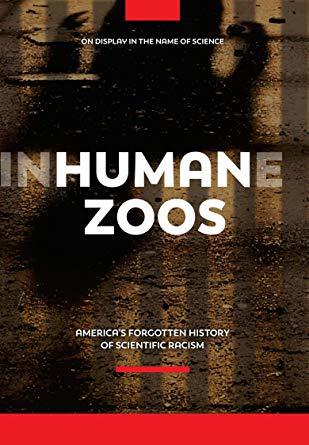Michael J. Behe's Blog, page 566
November 21, 2018
Crows Can Be as Smart as Apes
 But they have quite different brains. The intelligence doesn’t seem to reside in the details of the mechanism
But they have quite different brains. The intelligence doesn’t seem to reside in the details of the mechanism
Studying animals’ intelligence has taught us many things. But in some ways, it has deepened the mystery of intelligence.
We might have thought that intelligence, in terms of individual learning ability, would gradually increase among animals, from invertebrates to vertebrates, from exothermic (cold-blooded) animals to endothermic (warm-blooded) animals, from reptiles to primates, culminating in man. In that case, intelligence would be associated with the increasingly complex brain structures that enable it.
Research has demonstrated the opposite. “Crows Can Be as Smart as Apes” at Mind Matters
See also: Even Lizards Can Be Smart If you catch them at the right time. But can we give machines what the lizard has by nature?
and
Is the octopus a “second genesis” of intelligence?
Copyright © 2018 Uncommon Descent . This Feed is for personal non-commercial use only. If you are not reading this material in your news aggregator, the site you are looking at is guilty of copyright infringement UNLESS EXPLICIT PERMISSION OTHERWISE HAS BEEN GIVEN. Please contact legal@uncommondescent.com so we can take legal action immediately.
Plugin by Taragana
Half of social science replication studies failed under near-ideal conditions

What’s hot? What’s not?/Niklas Bildhauer, Wikimedia
It’s becoming harder to ignore the stench:
The drive recruited labs around the world to try to replicate the results of 28 classic and contemporary psychology experiments. Only half were reproduced successfully using a strict threshold for significance that was set at P < 0.0001 (the P value is a common test for judging the strength of scientific evidence). Brian Owens, “Replication failures in psychology not due to differences in study populations” at Nature
So why did so many classic studies fail? The account in Nature doesn’t say but that won’t The Atlantic, stop people wondering:
Despite the large sample sizes and the blessings of the original teams, the team failed to replicate half of the studies it focused on. It couldn’t, for example, show that people subconsciously exposed to the concept of heat were more likely to believe in global warming, or that moral transgressions create a need for physical cleanliness in the style of Lady Macbeth, or that people who grow up with more siblings are more altruistic. And as in previous big projects, online bettors were surprisingly good at predicting beforehand which studies would ultimately replicate. Somehow, they could intuit which studies were reliable. Ed Yong, “Psychology’s Replication Crisis Is Running Out of Excuses” at The Atlantic
Someone should interview the online bettors about how they knew which studies would replicate and which to avoid. Were the latter studies designed to demonstrate some new hotness or Cool that would play well at TED talks?
Follow UD News at Twitter!
See also: Why do we think “social psychology” is science anyway?
At the New York Times: Defending the failures of social science as “science”
What’s wrong with social psychology, in a nutshell
How political bias affects social science research
Stanford Prison Experiment findings a “sham” – but how much of social psychology is legitimate anyway?
A BS detector for the social sciences
and
All sides agree: progressive politics is strangling social sciences
Copyright © 2018 Uncommon Descent . This Feed is for personal non-commercial use only. If you are not reading this material in your news aggregator, the site you are looking at is guilty of copyright infringement UNLESS EXPLICIT PERMISSION OTHERWISE HAS BEEN GIVEN. Please contact legal@uncommondescent.com so we can take legal action immediately.
Plugin by Taragana
Theoretical physicist: Present phase of physics “not normal” – but stagnation, not crisis
 Theoretical physicist Sabine Hossenfelder, author of Lost in Math: How Beauty Leads Physics Astray, acknowledges the seriousness of the situation but isn’t sure that the term “crisis” describes the current situation well:
Theoretical physicist Sabine Hossenfelder, author of Lost in Math: How Beauty Leads Physics Astray, acknowledges the seriousness of the situation but isn’t sure that the term “crisis” describes the current situation well:
I think stagnation describes it better. And let me be clear that the problem with this stagnation is not with the experiments. The problem is loads of wrong predictions from theoretical physicists.
The problem is also not that we lack data. We have data in abundance. But all the data are well explained by the existing theories – the standard model of particle physics and the cosmological concordance model. Still, we know that’s not it. The current theories are incomplete.
So what would she change?
I have spelled out many times very clearly what theoretical physicists should do differently. It’s just that they don’t like my answer. They should stop trying to solve problems that don’t exist. That a theory isn’t pretty is not a problem. Focus on mathematically well-defined problems, that’s what I am saying. And, for heaven’s sake, stop rewarding scientists for working on what is popular with their colleagues. Sabine Hossenfelder, “The present phase of stagnation in the foundations of physics is not normal” at BackRe(Action)
She notes that working on the hard mathematical problems led to breakthroughs in physics but fears that, once again, the continued organization of conferences and production of papers will be the choice. Oh, and nonsense: “blathering about naturalness and multiverses and shifting their ‘predictions,’ once again, to the next larger particle collider.”
Well, she’s got a turn of phrase. Let’s hope she keeps writing.
Follow UD News at Twitter!
See also: Is cosmology in crisis over how to measure the universe? One wonders how much of the problem stems from the need for a different universe from the one we have.
Theoretical physicist Sabine Hossenfelder shares her self-doubts about exposing nonsense in cosmology
and
Sabine Hossenfelder: Free will is compatible with physics
Copyright © 2018 Uncommon Descent . This Feed is for personal non-commercial use only. If you are not reading this material in your news aggregator, the site you are looking at is guilty of copyright infringement UNLESS EXPLICIT PERMISSION OTHERWISE HAS BEEN GIVEN. Please contact legal@uncommondescent.com so we can take legal action immediately.
Plugin by Taragana
Is cosmology “in crisis” over how to measure the universe?

Big Bang/NASA
We are told that the Standard Model just doesn’t work:
Every night, astronomers post new ideas to arXiv, the open access publishing site. Cosmologists, in particular, use arXiv to engage in timely back-and-forths that formal journals don’t permit. “We’re just holding on for dear life, trying to keep up with what’s coming out,” says Scolnic. And trying to figure out why the Hubble constant calculations don’t match, where they’ve gone wrong, where they go from here, and how our conception of the universe might change from that new vantage point.
Something big may be about to happen to cosmology. It’s easy to see where the cosmologists are coming from, in their glee at the possibility that they’ve been wrong about the cosmos. Which makes sense: Who wouldn’t like to live in a universe that’s more interesting than we’d thought?Sarah Scoles, “Cosmology Is in Crisis over How to Measure the Universe” at Wired
One wonders how much of the problem stems from the need for a different universe from the one we have.
Follow UD News at Twitter!
See also: Does time exist and do we experience it?
and
If quantum mecha nics were a researcher, she’d be fired
Copyright © 2018 Uncommon Descent . This Feed is for personal non-commercial use only. If you are not reading this material in your news aggregator, the site you are looking at is guilty of copyright infringement UNLESS EXPLICIT PERMISSION OTHERWISE HAS BEEN GIVEN. Please contact legal@uncommondescent.com so we can take legal action immediately.
Plugin by Taragana
November 20, 2018
Reviewer: Human Zoos film prompts some hard questions
 A reviewer of the new documentary Human Zoos: America’s Forgotten History of Scientific Racism poses some questions he hopes will be broadly discussed:
A reviewer of the new documentary Human Zoos: America’s Forgotten History of Scientific Racism poses some questions he hopes will be broadly discussed:
– How was it that people who considered themselves Christians could troop through exhibitions, such as at the 1904 St. Louis World’s Fair, and gawk at other groups of people exhibited like animals? Just because they came from more “primitive” cultures, such as the Philippines’?
– How could thousands of church-going New Yorkers, over several sold-out weeks, go to the Bronx Zoo to gawk at Ota Benga, an African pygmy kidnapped from his faraway home, and displayed in a cage with orangutans, as the “missing” link in evolution? (After protests from black clergymen, he was eventually released, but ten years later committed suicide.)
– How exactly did America’s intellectual elites, in the 1920s and 30s, fall in love with eugenics, and back laws in 13 states that forcibly sterilized thousands of Americans — just for flunking culturally biased IQ tests?
– How can the eugenics organization, Planned Parenthood, which sponsored those laws (soon emulated in Nazi Germany), still be a major force today, receiving hundreds of millions in federal funding? John Zmirak, “‘Human Zoos’ Exhibits the Racist Toll of Darwinism” at The Stream
He adds, “I didn’t use to believe it, but I’ve come to see that the single most powerful force for dissolving religious faith in the West was, and still is, Darwinism.”
The idea that someone has to be the subhuman is a powerful one and it probably motivates a lot of popular Darwinism.
Follow UD News at Twitter!
See also: J.R. Miller on Darwinism, racism, and human zoos
and
In any Darwinian scheme, someone must be the subhuman. Otherwise, there is no beginning to human history.
Copyright © 2018 Uncommon Descent . This Feed is for personal non-commercial use only. If you are not reading this material in your news aggregator, the site you are looking at is guilty of copyright infringement UNLESS EXPLICIT PERMISSION OTHERWISE HAS BEEN GIVEN. Please contact legal@uncommondescent.com so we can take legal action immediately.
Plugin by Taragana
Is Darwin’s “abominable mystery” of flowers partly solved by a recent discovery?

Lijinganthus revoluta/NIGPAS
The beautifully-preserved fossil found in amber from 99 million years ago belongs to the large, diverse Pentepetalae clade:
Together with contemporaneous flowers and fruits, the researchers say, Lijinganthus indicates that core eudicots flourished on Earth about 100 million years ago, although did not dominate vegetation until about 20 million years later, the mid-Cretaceous.
“Various molecular clocks indicate that angiosperms and eudicots have a significantly earlier origin than the earliest fossil record indicates,” the authors write.Nick Carne, “Darwin’s ‘abominable mystery’ more apparent than real” at Cosmos
A perfect flower in a mid-Cretaceous (early Cenomanian) Myanmar amber is described as Lijinganthus revoluta gen. et sp. nov. The fossil flower is actinomorphic and pentamerous, including calyx, corolla, stamens, and gynoecium. The sepals are tiny, while the petals are large and revolute. The stamens are dorsifixed, filamentous, and each has a longitudinally dehiscing bisporangiate anther. The gynoecium is in the centre of the flower, composed of three fused carpels with a stout style. Lijinganthus revoluta gen. et sp. nov. demonstrates a great resemblance to the flowers of Pentapetalae (Eudicots), adding new information to the enigmatic early evolutionary history of Pentapetalae and Eudicots.Abstract: [access] More. (open access)
The researchers suggest that their find shows that flowers originated less suddenly than Darwin had thought. A friend in the field notes, however, that this fossil is not unique; many angiosperm fossils from the early Cretaceous period (roughly 145 mya to 66 mya) have been found. The
“abominable mystery” has always been about why flowering plants are not found in Jurassic period (roughly 199.6 mya to 145.5 mya) and earlier. We still don’t know.
Nice flower though.
Follow UD News at Twitter!
See also: Researchers: Over one hundred-million-year gap between accounts of when flowers originated – “false precision”
New hypothesis as to why flowering plants predominate
and
“Confounding”: Moths and butterflies predate flowering plants by millions of years
Copyright © 2018 Uncommon Descent . This Feed is for personal non-commercial use only. If you are not reading this material in your news aggregator, the site you are looking at is guilty of copyright infringement UNLESS EXPLICIT PERMISSION OTHERWISE HAS BEEN GIVEN. Please contact legal@uncommondescent.com so we can take legal action immediately.
Plugin by Taragana
Michael Ruse update: “Morality is just an aid to survival and reproduction…
 . . . And any deeper meaning is illusory.” Reader Ken Francis, author with Theodore Dalrymple of The Terror of Existence: From Ecclesiastes to Theatre of the Absurd, read our piece on Darwinian philosopher Michael Ruse explaining why he is not a new atheist. He thought other readers might be interested to know of something Dr. Ruse has said in the past:
. . . And any deeper meaning is illusory.” Reader Ken Francis, author with Theodore Dalrymple of The Terror of Existence: From Ecclesiastes to Theatre of the Absurd, read our piece on Darwinian philosopher Michael Ruse explaining why he is not a new atheist. He thought other readers might be interested to know of something Dr. Ruse has said in the past:
Morality is a biological adaptation no less than are hands and feet and teeth. Considered as a rationally justifiable set of claims about an objective something, ethics is illusory. I appreciate that when somebody says ‘love thy neighbor as thyself,’ they think they are referring above and beyond themselves. Nevertheless, such reference is truly without foundation. Morality is just an aid to survival and reproduction . . . And any deeper meaning is illusory.”
Michael Ruse, “Evolutionary Theory and Christian Ethics,” in The Darwinian Paradigm (London: Routledge, 1989), pp. 262-269.
Note: Someone has been trying to get William Lane Craig in trouble for assuming that Dr. Ruse would not go that far:

But apparently, he does. It seems Dr. Ruse’s dislike of new atheists is, as he implies, aesthetic.
Oh well, back to our regular coverage.
Follow UD News at Twitter!
See also: Why Darwinian philosopher Michael Ruse is not a new atheist Ruse: Partly it is aesthetic. They are so vulgar. Dawkins in The God Delusion would fail any introductory philosophy or religion course…
and
Theodore Dalrymple and Ken Francis on the terror of a materialist atheist’s existence
Copyright © 2018 Uncommon Descent . This Feed is for personal non-commercial use only. If you are not reading this material in your news aggregator, the site you are looking at is guilty of copyright infringement UNLESS EXPLICIT PERMISSION OTHERWISE HAS BEEN GIVEN. Please contact legal@uncommondescent.com so we can take legal action immediately.
Plugin by Taragana
Wouldn’t you know, jumping “junk DNA” can be lethal too

artist’s image of double helix/Public Domain
Researchers Nigel Goldenfeld and Thomas Kuhlman noticed that “half of the human genome is made up of retrotransposons [jumping genes, “junk DNA”], but bacteria hardly have them at all” and wondered what would happen if they just inserted some:
“We thought a really simple thing to try was to just take one (retrotransposon) out of my genome and put it into the bacteria just to see what would happen,” Kuhlman said. “And it turned out to be really quite interesting.”
Their results, published in the Proceedings of the National Academy of Sciences, give more depth to the history of how advanced life may have emerged billions of years ago—and could also help determine the possibility and nature of life on other planets.
Along the way to explaining life, the researchers first encountered death—bacterial death, that is. When they put retrotransposons in bacteria, the outcome was fatal.
“As they jump around and make copies of themselves, they jump into genes that the bacteria need to survive,” Kuhlman said. “It’s incredibly lethal to them.”
When retrotransposons copy themselves within the genome, they first find a spot in the DNA and cut it open. To survive, the organism then has to repair this cut. Some bacteria, like E. coli, only have one way to perform this repair, which usually ends up removing the new retrotransposon. But advanced organisms (eukaryotes) have an additional “trick” called nonhomologous end-joining, or NHEJ, that gives them another way to repair cuts in their DNA.
Goldenfeld and Kuhlman decided to see what would happen if they gave bacteria the ability to do NHEJ, thinking that it would help them tolerate the damage to their DNA. But it just made the retrotransposons better at multiplying, causing even more damage than before.
“It just completely killed everything,” Kuhlman said. “At the time, I thought I was just doing something wrong.” More” at Phys.org
You are doing something wrong, Dr. Kuhlman. You are tinkering with an engineered system whose manual you have never read, though you may end up contributing to it. 
November 19, 2018
Complex stone tools from 160,000 to 170,000 years ago found in China
The Levallois method of making stone tools was used in India 172,000 years ago:
Rather than chipping flakes off a stone to create a tool, Levallois techniques work on the stone so it is the flakes themselves that become the tools. This enables several tools to be made from a single stone.
Until recently, it seemed that the Levallois revolution didn’t spread east to places like China until much later – about 40,000 years ago – but that idea is now being questioned. Bo Li at the University of Wollongong, Australia, and his colleagues have just confirmed that Levallois-style stone tools recovered from Guanyindong cave in south China are between 160,000 and 170,000 years old. Colin Barras, “Complex stone tools in China may re-write our species’ ancient history” at New Scientist
Interesting that Barras uses the term “ancient history” in describing the find’s significance. As more and more blanks are filled in, evolution becomes more of a history and less of a theory.
Here’s a guess: More light will be shed on some questions but many popular ones will recede in importance. If, for example, someone wants to claim that early man’s brain was shaped by sexual jealousy, well, it’s an opinion the commentator is entitled to but it won’t really have the same status as a trove of newly discovered artifacts. It will be more like having a similar Big Theory about the Sumerians or the Biblical patriarchs.
Follow UD News at Twitter!
See also: Stone tools found in Saudi Arabia from 300,000 years ago
How did stone tools get to the Philippines 700 kya?
Revolutionary stone tools found in India “much earlier than thought,” 385 kya
Stone tools confirmed from 3.4 mya?
and
Stone tools now dated to 3.3 million years ago
Copyright © 2018 Uncommon Descent . This Feed is for personal non-commercial use only. If you are not reading this material in your news aggregator, the site you are looking at is guilty of copyright infringement UNLESS EXPLICIT PERMISSION OTHERWISE HAS BEEN GIVEN. Please contact legal@uncommondescent.com so we can take legal action immediately.
Plugin by Taragana
Bird, tested and released, turned out to be a hybrid of three species

rare triple-hybrid warbler (Golden-winged Warbler, Blue-winged Warbler, and Chestnut-sided Warbler)/Lowell Burket
From ScienceDaily:
Scientists have shown that a bird found in Pennsylvania is the offspring of a hybrid warbler mother and a warbler father from an entirely different genus — a combination never recorded before now and which resulted in a three-species hybrid bird. This finding has just been published in the journal Biology Letters.
“It’s extremely rare,” explains lead author and Cornell Lab of Ornithology postdoctoral associate David Toews. “The female is a Golden-winged/Blue-winged Warbler hybrid — also called a Brewster’s Warbler. She then mated with a Chestnut-sided Warbler and successfully reproduced.”
Well, if all we’ve heard about “species” and “speciation” is true, it shouldn’t just be extremely rare; it should be impossible.
Hybridization is common among Golden-winged and Blue-winged Warblers, and this has been of particular concern for Golden-winged Warblers which have declined dramatically in some populations. But hybridization has never been recorded between these species and Chestnut-sided Warblers. This kind of rare hybridization event may also occur more often in the declining warbler populations of Appalachia, because there is a smaller pool of mates from which to choose.
“That this hybridization occurred within a population of Golden-winged Warblers in significant decline suggests that females may be making the best of a bad situation,” says Toews. “It also tells us that wood-warblers in general have remained genetically compatible long after they evolved major differences in appearance.” Paper. (open access) – David P. L. Toews, Henry M. Streby, Lowell Burket, Scott A. Taylor. A wood-warbler produced through both interspecific and intergeneric hybridization. Biology Letters, 2018; 14 (11): 20180557 DOI: 10.1098/rsbl.2018.0557 More.
If so, do the genetics of the group permit significant differences in appearance while retaining “insurance against extinction,” in that members remain compatible for mating purposes?
The researchers, having captured and released the bird, are planning to keep an eye on him to see if he finds a mate.
“It tells us that warblers in general appear to be reproductively compatible over millions of years of independent evolution,” Dave Toews, postdoctoral associate at the Cornell Lab of Ornithology, told Gizmodo. “The things that really define them, their distinct colors and their songs, are likely mating barriers, and that they don’t interbreed because they can’t, but because they choose not to.”Ryan F. Mandelbaum, “DNA Testing Reveals Baffling Bird Is Three Species in One” at Gizmodo
As Ryan Mandelbaum philosophizes at Gizmodo, “Birds are just looking for love. Sometimes, if they can’t find the right mate, they’ve got to settle.”
Follow UD News at Twitter!
See also: It’s likely impossible to find out how many species there are
Addressing the speciation mess: View species as models?
and
A physicist looks at biology’s problem of “speciation” in humans
Cornell lab on warblers, generally:
Copyright © 2018 Uncommon Descent . This Feed is for personal non-commercial use only. If you are not reading this material in your news aggregator, the site you are looking at is guilty of copyright infringement UNLESS EXPLICIT PERMISSION OTHERWISE HAS BEEN GIVEN. Please contact legal@uncommondescent.com so we can take legal action immediately.
Plugin by Taragana
Michael J. Behe's Blog
- Michael J. Behe's profile
- 219 followers



